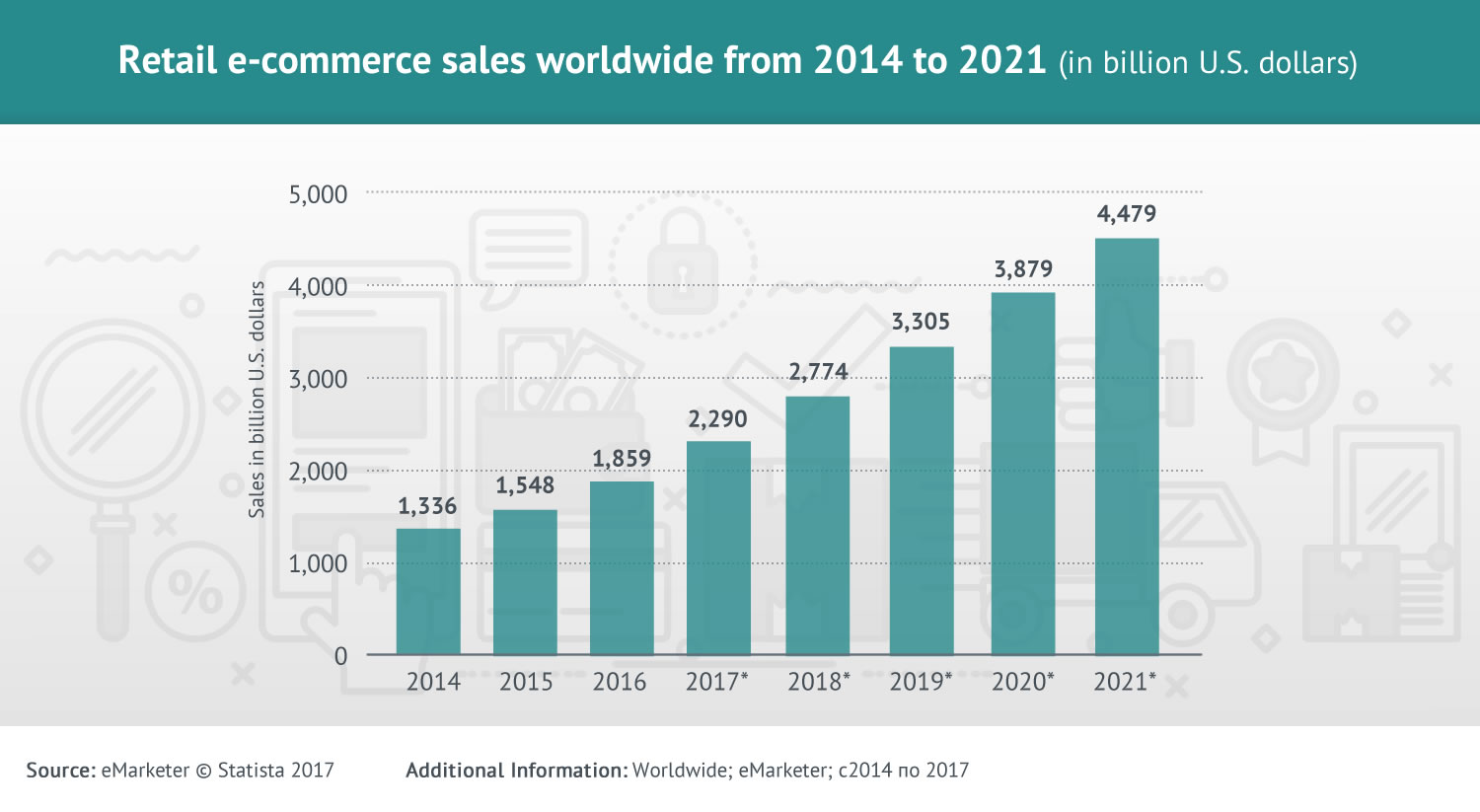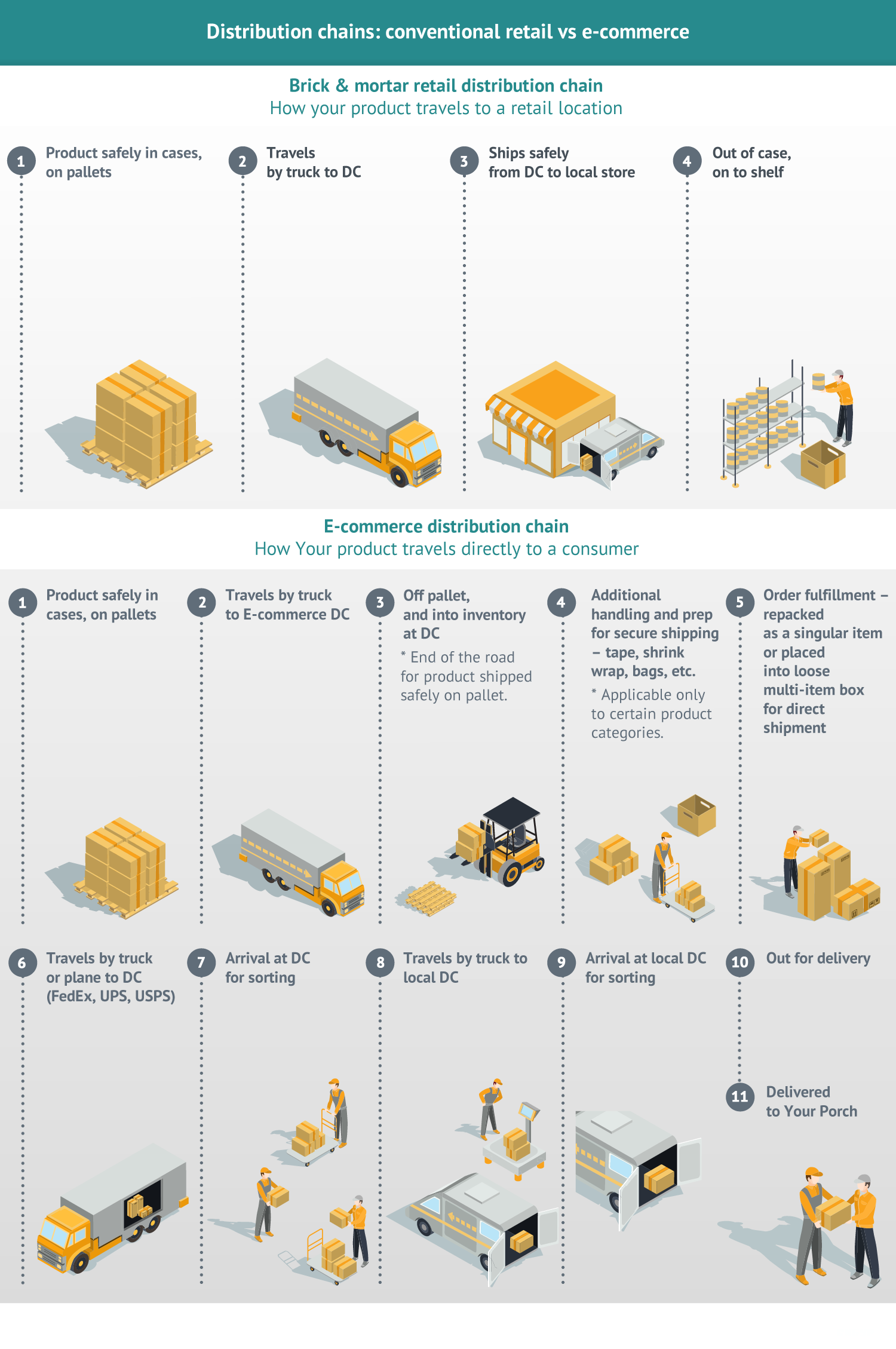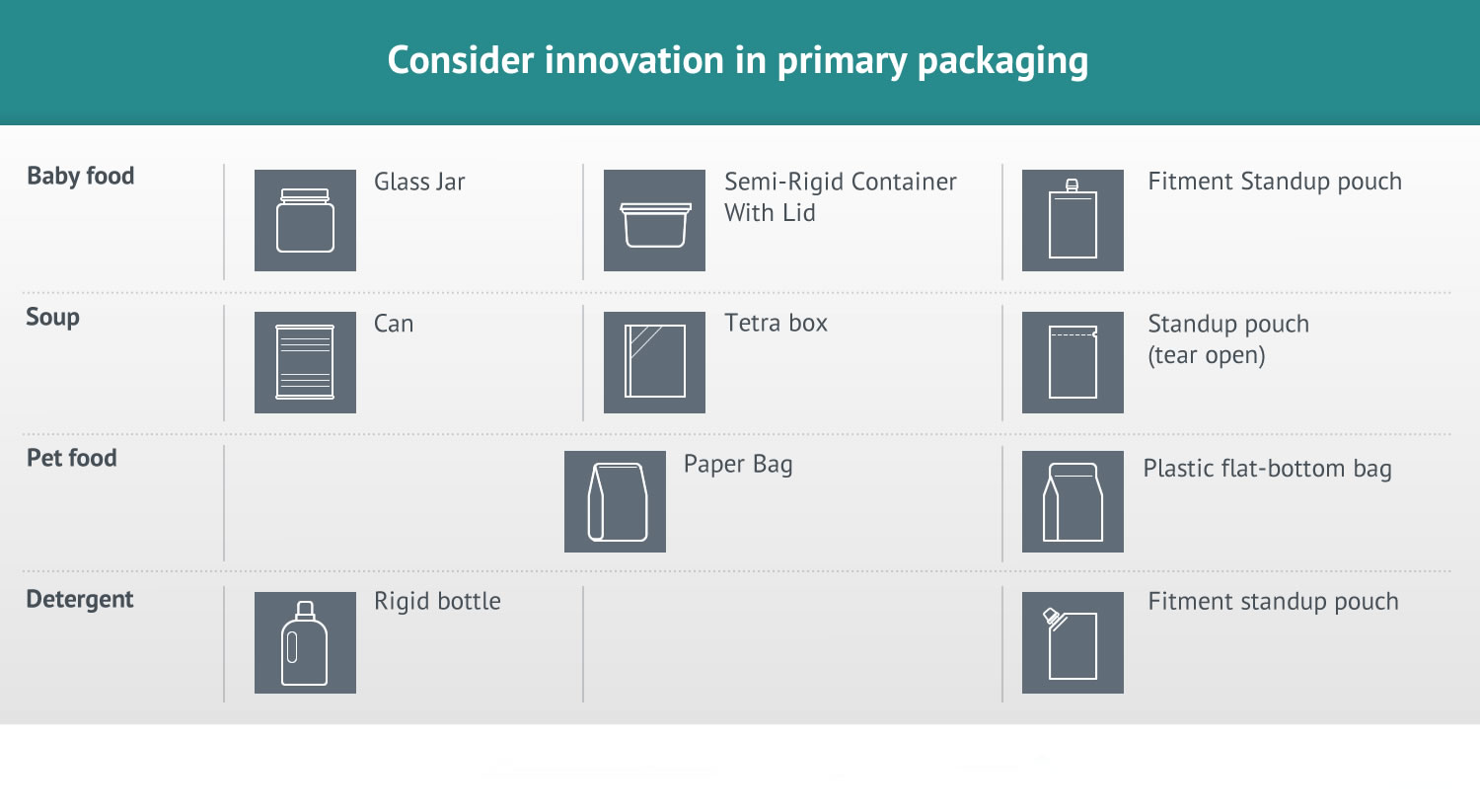By the end of 2017, global online retail is set to reach USD 2.3 tn, up by over 23% y-o-y. With global retail turnover totalling some USD 22.7 tn, the share of e-commerce will for the first time in history amount to one tenth of global sales. And it is not going to stop there, according to eMarketer's Worldwide Retail and Ecommerce Sales report. The eMarketer estimates suggest that, in the next few years, electronic commerce will consistently grow by over 10% per annum mainly driven by the Asian markets (primarily China, but also India and other nations). As a result, early in the next decade, the online commerce market will most probably draw close to the USD 4.5 tn mark.
One thing that sets e-commerce apart is its longer distribution chain, as the purchased goods have to pass through a greater number of distribution points vs the conventional four. This increases the risk of packages being damaged during the transportation.
According to DS Smith, more than one third of online buyers in the UK have to deal with poorly packed orders, which leaves every fifth consumer strongly disappointed. According to another study by JABIL, 95% of manufacturers agree that inconvenient, uncomely or damaged packaging significantly reduces the product's consumer appeal.
англ. В ближайшие годы темпы роста электронной коммерции будут стабильно превышать 10%, а основным драйвером будет Азия, прежде всего Китай, но также Индия и другие страны региона.
That is why the popularity of online shopping can substantially drive demand for plastics (primarily polyethylene) that are used to manufacture films, bags and bubble wraps. "It is true that goods supplied by e-commerce operators have their own packaging, but every order made requires additional packaging," says JP Nah, Director of Polyolefins at IHS Markit Chemical.
Previously designers developed packaging solutions for a product in an ideal environment, i.e. standard batches of goods comfortably placed inside special boxes or pallets. However, this approach does not work in electronic retail, as goods have to travel alone or with other types of products. The packaging that serves the purposes of large batches of goods may be totally inappropriate for online orders delivered individually or along with all kinds of other products. The Bemis research shows that meat and dairy products, chocolate, cereals, canned vegetables, pet foods, stain removers, detergents and shampoos are the types of products that need new packaging solutions most badly.
Bemis experts used scientifically approved methods to demonstrate that packages that were a good fit for the era of mass production are becoming increasingly irrelevant at the time of e-commerce. They developed a packaging integrity test factoring in the requirements of e-commerce and applied it to 170 goods across 34 different product categories. Two thirds of the samples did not pass the test, with soft plastic packages (rather than the rigid tin ones) showing the best results.
According to the statistical data provided by Schönwald Consulting, international sales of soft containers grow by 7% per annum. Asia Pacific makes up half of that market (over USD 200 bn), whereas Europe and North America jointly account for less than one third of global consumers. Some 165 million of soft containers for liquid foods and beverages are currently being sold all over the world. The demand for tin cans is still twice as big, but only a few years ago soft packages were barely used for that type of products. Now soft containers account for 25% of the packaging market.
Making a case for the pouch packaging solutions in 2016, Andrew Gordon, a manager for packaging innovation at Campbell Soup Co., pointed out to the following benefits: soft containers open easily, they are light and can be closed after use, such packages better preserve product properties and make it possible for the customer to actually see the product they buy. Soft packaging was invented back in the 1940-s, but its application was constrained due to the limited variety of source materials. The emergence of BOPP films, as well as the spread of vacuum packing, co-extrusion, lamination and graphic design technologies, ushered in an era of soft packaging. Thanks to their unique consumer qualities and light weight, multi-layer polymer containers are increasingly supplanting the traditional tin and glass packages.
New trends in the packaging market have led to the emergence of innovative industrial design services. The founders of OnPoint2020 noted that in determining delivery costs logistics companies take into account both the weight and size of packages. By using the QubeVu equipment (which has in many ways become an industry standard thanks to Amazon, UPS and FedEx), OnPoint2020 is developing packaging solutions to minimise delivery costs and avoid the situations where transportation is more expensive than the ordered product.
DS Smith also offers packaging design services proving that the manufacturer can reduce the number of rented trucks by 20 vehicles a year and significantly cut transportation costs by scrapping a mere 5 mm of additional packaging. DS Smith also notes environmental friendliness of utilised packaging materials as another important factor influencing consumer decisions. Overall, more than 40% of customers admitted that their orders were excessively packed.
In the near future, the market is likely to get further insights into how fit the current packaging solutions are for the needs of online commerce. DS Smith plans to open three testing suites in the UK, France and Germany each containing pieces of equipment replicating drops, impacts, shocks, crushes and shakes throughout the product journey from the manufacturer to the end consumer.
Download PDF








